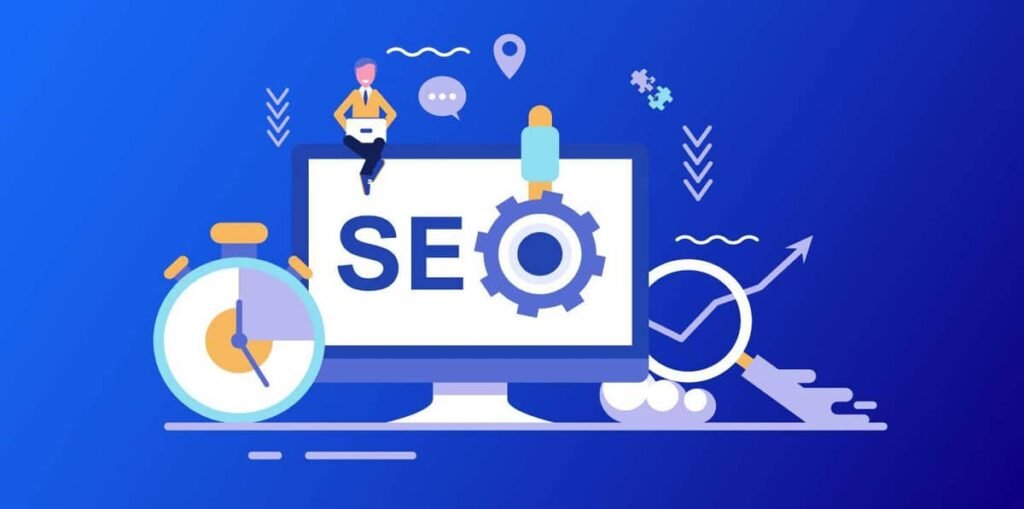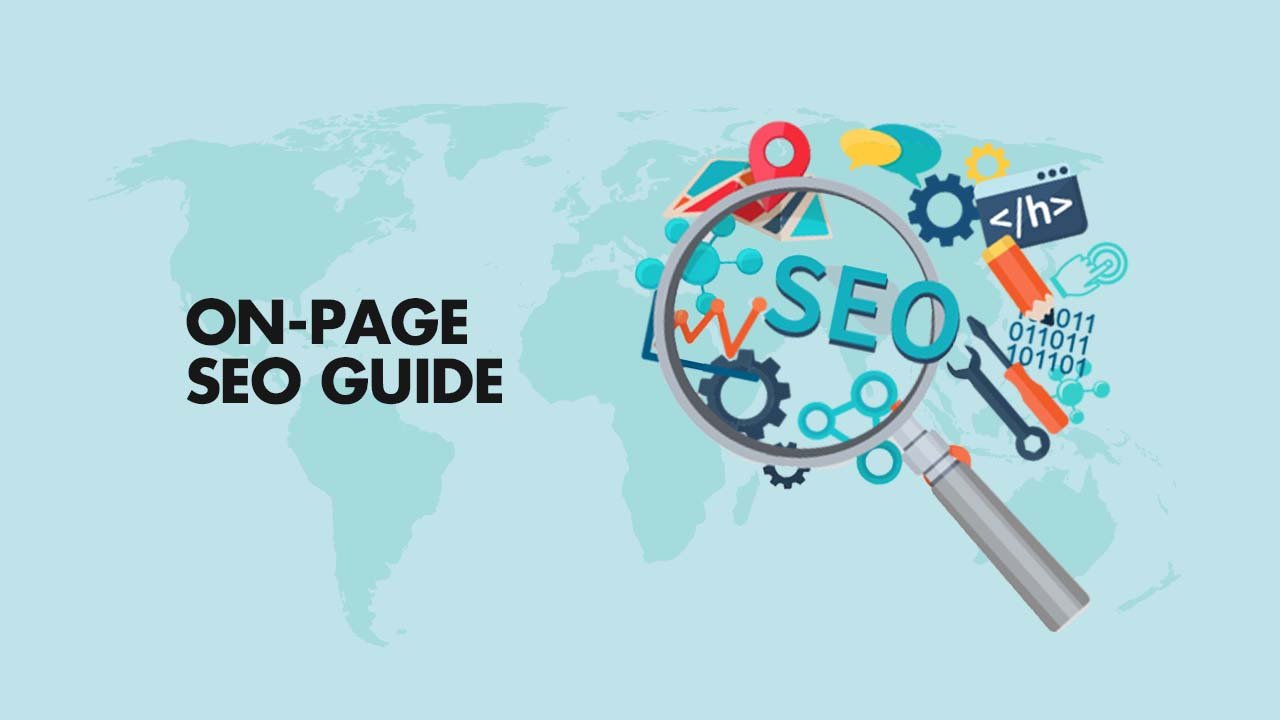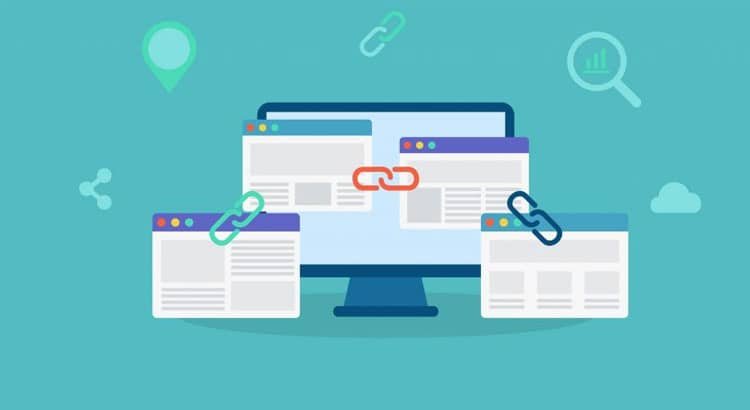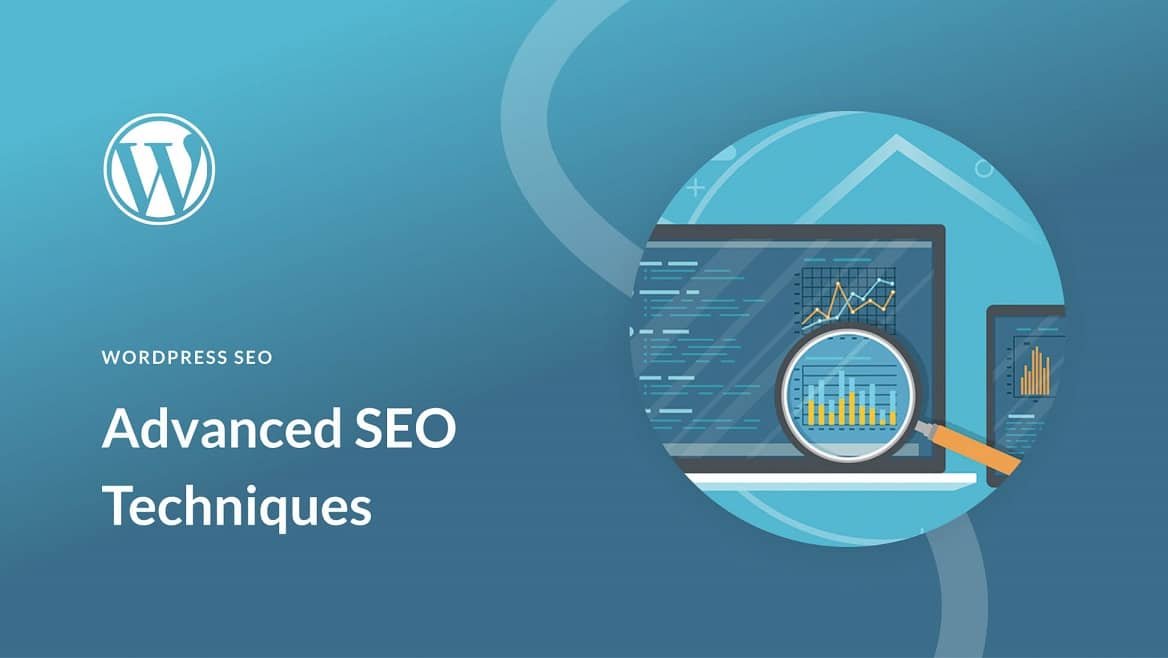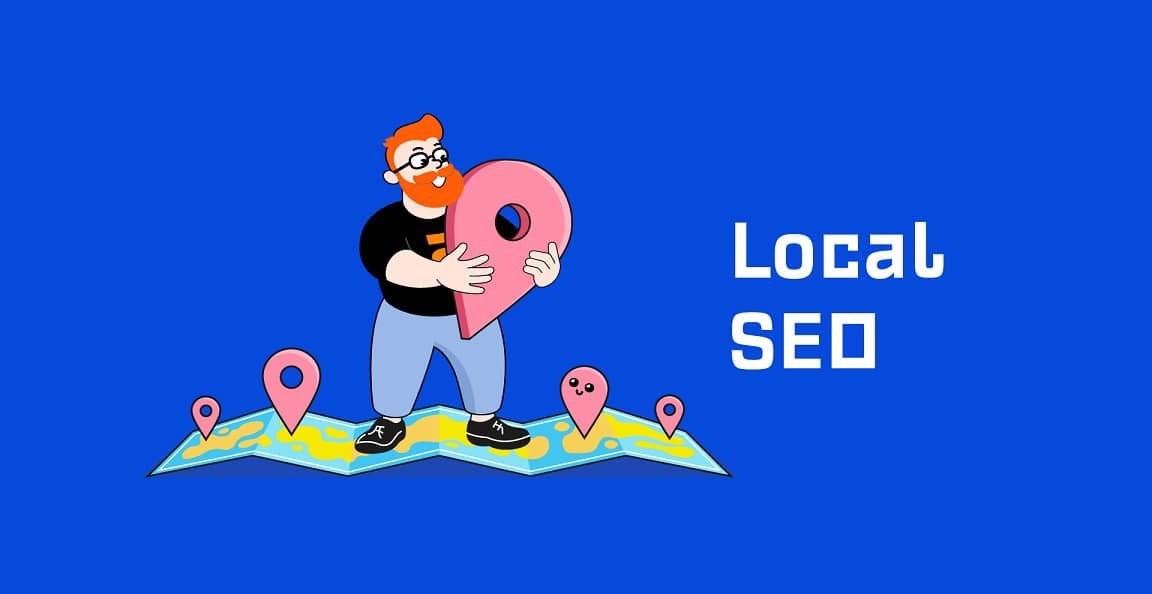In today’s digital age, having a website is essential for any business or individual looking to establish an online presence. However, simply having a website is not enough. To truly stand out and attract visitors, your website needs to be optimized for search engines. This is where SEO (Search Engine Optimization) comes in. SEO is the practice of improving your website’s visibility and ranking in search engine results pages (SERPs) through various techniques and strategies. In this article, we’ll explore the basics of WordPress SEO and how you can optimize your WordPress website to improve its search engine ranking and attract more visitors. From keyword research to on-page optimization, technical SEO, and off-page optimization, we’ll cover everything you need to know to get started with WordPress SEO. So, whether you’re a seasoned WordPress user or just getting started, read on to learn how to take your website to the next level with SEO.

Understanding SEO: A Brief Overview
What is SEO?
SEO, or search engine optimization, is the practice of optimizing your website to rank higher in search engine results pages (SERPs). When someone searches for a keyword or phrase related to your website, you want your site to appear as high up in the results as possible. This is because the higher your site ranks, the more likely people are to click on it and visit your site.
SEO involves a variety of techniques and strategies that are designed to make your website more attractive to search engines. This includes optimizing your content, site structure, and backlinks. By doing this, you’re signaling to search engines that your site is high-quality and relevant to the keywords you’re targeting.
There are many factors that go into SEO, including on-page optimization, off-page optimization, and technical SEO. On-page optimization involves optimizing your content and site structure, while off-page optimization involves building high-quality backlinks to your site. Technical SEO involves optimizing your site’s technical elements, such as site speed and URL structure.
The goal of SEO is to attract more organic traffic to your website. Organic traffic is traffic that comes from search engines, and it’s valuable because it’s free and targeted. When someone searches for a keyword related to your site and clicks on your link, they’re already interested in what you have to offer. This makes them more likely to convert into a customer or take some other desired action on your site.
SEO is a complex and ever-changing field, but it’s essential for any website that wants to attract organic traffic and succeed online. By understanding the basics of SEO and implementing best practices on your site, you can improve your search engine rankings and attract more visitors to your site.
Why SEO is important for your website?
SEO is important for any website because it helps you attract more organic traffic, which is traffic that comes from search engines. Organic traffic is valuable because it’s free and targeted. When someone searches for a keyword related to your site and clicks on your link, they’re already interested in what you have to offer. This makes them more likely to convert into a customer or take some other desired action on your site.
In addition to attracting more organic traffic, SEO can also help you build your brand and establish your authority in your industry. When your site ranks high in search engine results pages, it signals to potential customers that your site is high-quality and relevant to their needs. This can help you build trust and credibility with your audience, which can lead to more conversions and sales.
SEO is also important because it’s a long-term strategy for driving traffic to your site. Unlike paid advertising, which stops working as soon as you stop paying for it, SEO can continue to drive traffic to your site for months or even years after you’ve implemented it. This makes it a valuable investment for any website that wants to attract more traffic and grow their business over time.
SEO is an essential part of any website’s marketing strategy. By optimizing your site for search engines, you can attract more organic traffic, build your brand, and establish your authority in your industry. Whether you’re running a small blog or a large e-commerce site, SEO can help you achieve your goals and succeed online.
How does SEO work?
SEO works by optimizing various elements of your website to make it more attractive to search engines. When someone searches for a keyword or phrase related to your website, search engines like Google use complex algorithms to determine which sites are the most relevant and useful for that search query. By optimizing your site for these algorithms, you can improve your search engine rankings and attract more organic traffic to your site.
There are many factors that go into SEO, including on-page optimization, off-page optimization, and technical SEO. On-page optimization involves optimizing your content and site structure to make it more attractive to search engines. This includes using relevant keywords in your content, optimizing your title tags and meta descriptions, and using header tags to structure your content.
Off-page optimization involves building high-quality backlinks to your site from other reputable websites. Backlinks are like votes of confidence for your site, and they signal to search engines that your site is high-quality and relevant to the keywords you’re targeting.
Technical SEO involves optimizing your site’s technical elements, such as site speed, URL structure, and mobile responsiveness. By optimizing these elements, you can improve your site’s user experience and make it easier for search engines to crawl and index your site.
SEO is a complex and ever-changing field, but it’s essential for any website that wants to attract organic traffic and succeed online. By understanding the basics of SEO and implementing best practices on your site, you can improve your search engine rankings and attract more visitors to your site.
WordPress SEO Basics: Getting Started
Installing an SEO plugin
One of the first steps in getting started with WordPress SEO is to install an SEO plugin. There are many different SEO plugins available for WordPress, but some of the most popular ones include Yoast SEO, All in One SEO Pack, and The SEO Framework.
To install an SEO plugin, you’ll first need to log in to your WordPress dashboard. From there, navigate to the “Plugins” section and click on “Add New.” You can then search for the SEO plugin you want to install and click on “Install Now” to install it. (Also see How to install a WordPress Plugin Article)
Once you’ve installed your SEO plugin, you’ll need to configure it to work with your site. This typically involves setting up your site structure, optimizing your content for search engines, and configuring any additional settings that are specific to your plugin.
Most SEO plugins come with a setup wizard or configuration guide that can help you get started. This will walk you through the process of setting up your plugin and configuring it to work with your site.
Installing an SEO plugin is an essential step in getting started with WordPress SEO. By choosing the right plugin and configuring it properly, you can improve your search engine rankings and attract more organic traffic to your site.
Setting up your site structure
Setting up your site structure is an important part of WordPress SEO. Your site structure refers to the way your site is organized, including your navigation menu, categories, and tags. By organizing your site in a logical and intuitive way, you can make it easier for both users and search engines to navigate and understand your site.
One of the first steps in setting up your site structure is to create a clear and concise navigation menu. Your navigation menu should include links to your most important pages and categories, and it should be easy to use and understand. You can also use submenus to organize your content into more specific categories.
Another important aspect of site structure is your use of categories and tags. Categories are broad topics that your content falls under, while tags are more specific keywords that describe your content in more detail. By using categories and tags effectively, you can make it easier for users to find the content they’re looking for and for search engines to understand the structure of your site.
Finally, it’s important to ensure that your site is mobile-friendly and easy to use on all devices. This means using a responsive design that adapts to different screen sizes and ensuring that your site loads quickly and smoothly on all devices.
Overall, setting up your site structure is an essential part of WordPress SEO. By organizing your site in a logical and intuitive way, you can improve your user experience and make it easier for search engines to understand and rank your site.

Optimizing your content for search engines
Optimizing your content for search engines is an important part of WordPress SEO. Your content includes everything from your blog posts and pages to your images and videos. By optimizing your content for search engines, you can improve your search engine rankings and attract more organic traffic to your site.
One of the first steps in optimizing your content is to conduct keyword research. Keyword research involves identifying the keywords and phrases that your target audience is searching for and incorporating them into your content. This can help you rank higher in search engine results pages and attract more targeted traffic to your site.
Once you’ve identified your target keywords, you can start optimizing your content for them. This includes using your target keywords in your title tags, meta descriptions, and header tags. You should also aim to use your keywords naturally throughout your content, without overusing them or stuffing them in unnaturally.
In addition to optimizing your content for keywords, you should also aim to create high-quality, engaging content that provides value to your audience. This can include blog posts, videos, infographics, and other types of content that are relevant to your audience and provide them with useful information.
Finally, it’s important to ensure that your content is easy to read and understand. This means using short paragraphs, bullet points, and headings to break up your content and make it more scannable. You should also aim to use clear and concise language that is easy to understand for your target audience.
Optimizing your content for search engines is an essential part of WordPress SEO. By conducting keyword research, creating high-quality content, and optimizing your content for keywords and readability, you can improve your search engine rankings and attract more organic traffic to your site.
Keyword Research: Finding the Right Keywords
What are keywords?
Keywords are the words and phrases that people use to search for information online. When someone types a keyword or phrase into a search engine like Google, the search engine uses complex algorithms to determine which websites are the most relevant and useful for that search query.
Keywords are an essential part of SEO because they help you understand what your target audience is searching for and how you can optimize your content to rank higher in search engine results pages. By targeting the right keywords, you can attract more organic traffic to your site and improve your search engine rankings.
There are many different types of keywords, including short-tail keywords, long-tail keywords, and branded keywords. Short-tail keywords are broad keywords that are typically one or two words long, while long-tail keywords are more specific and typically three or more words long. Branded keywords are keywords that include your brand name or variations of it.
When conducting keyword research, it’s important to choose keywords that are relevant to your business and your target audience. You should also aim to choose keywords that have a high search volume and low competition, as these are typically easier to rank for and can attract more organic traffic to your site.
Overall, keywords are an essential part of SEO and can help you attract more organic traffic to your site. By conducting keyword research and targeting the right keywords, you can improve your search engine rankings and attract more visitors to your site.
How to conduct keyword research?
Keyword research is the process of identifying the keywords and phrases that your target audience is searching for online. By conducting keyword research, you can gain insights into your audience’s interests and needs, and optimize your content to attract more organic traffic to your site.
There are many different tools and techniques that you can use to conduct keyword research. One of the most popular tools is the Google Keyword Planner, which allows you to see how many people are searching for a particular keyword and how competitive it is.
To use the Google Keyword Planner, you’ll need to create a Google Ads account and sign in to the Keyword Planner tool. From there, you can enter a keyword or phrase related to your business and see how many people are searching for it each month. You can also see related keywords and their search volume and competition.
Another way to conduct keyword research is to use tools like SEMrush, Ahrefs, or Moz. These tools allow you to see which keywords your competitors are ranking for and how difficult it is to rank for those keywords. You can also use these tools to identify long-tail keywords and other related keywords that you may not have thought of.
In addition to using keyword research tools, you can also conduct keyword research by analyzing your website’s analytics data. This can help you see which keywords are driving traffic to your site and which pages are ranking well in search engine results pages.
Conducting keyword research is an essential part of SEO and can help you attract more organic traffic to your site. By using tools like the Google Keyword Planner, SEMrush, or Moz, and analyzing your website’s analytics data, you can identify the right keywords to target and optimize your content to improve your search engine rankings.
Tools for keyword research
There are many different tools available for conducting keyword research, each with its own unique features and benefits. Here are some of the most popular tools for keyword research:
-
Google Keyword Planner: This is a free tool provided by Google that allows you to see how many people are searching for a particular keyword and how competitive it is. You can also see related keywords and their search volume and competition.
-
SEMrush: This is a paid tool that allows you to see which keywords your competitors are ranking for and how difficult it is to rank for those keywords. You can also use SEMrush to identify long-tail keywords and other related keywords that you may not have thought of.
-
Ahrefs: This is another paid tool that allows you to see which keywords your competitors are ranking for and how difficult it is to rank for those keywords. Ahrefs also provides detailed information on backlinks and other SEO metrics.
-
Moz Keyword Explorer: This is a paid tool that allows you to see how difficult it is to rank for a particular keyword and how much traffic you can expect to receive if you rank for that keyword. Moz also provides detailed information on related keywords and their search volume and competition.
-
Google Trends: This is a free tool provided by Google that allows you to see how the popularity of a particular keyword has changed over time. You can also see related topics and queries that are currently trending.
There are many different tools available for conducting keyword research, each with its own unique features and benefits. By using these tools, you can gain insights into your audience’s interests and needs, and optimize your content to attract more organic traffic to your site.
On-Page Optimization: Optimizing Your Content
On-Page Optimization refers to the optimization techniques that are used on your website to improve your search engine rankings. This includes optimizing your content, meta tags, images, and other on-page elements. By focusing on On-Page Optimization, you can improve the relevance and quality of your content, making it more attractive to search engines and users alike. Effective On-Page Optimization can help improve your search engine rankings and attract more organic traffic to your site.
Title tags and meta descriptions
Title tags and meta descriptions are important on-page elements that can have a significant impact on your search engine rankings. Title tags are the main heading of a web page and appear in search engine results pages, while meta descriptions are a brief summary of the page’s content that also appear in search engine results pages.
To optimize your title tags and meta descriptions, you should aim to include your target keywords and make them as compelling and relevant as possible. Your title tag should be no more than 60 characters, while your meta description should be no more than 155 characters.
In addition to including your target keywords, you should also aim to make your title tags and meta descriptions as engaging as possible. This can help attract more clicks from search engine users and improve your click-through rate.
It’s also important to ensure that your title tags and meta descriptions accurately reflect the content of your page. Misleading or irrelevant title tags and meta descriptions can hurt your search engine rankings and lead to a poor user experience.
So, optimizing your title tags and meta descriptions is an essential part of on-page optimization. By including your target keywords and making them as compelling and relevant as possible, you can improve your search engine rankings and attract more organic traffic to your site.
Header tags and content structure
Header tags and content structure are important on-page elements that can help improve the readability and relevance of your content. Header tags are used to structure your content into sections and sub-sections, while content structure refers to the overall organization and flow of your content.
To optimize your header tags and content structure, you should aim to use header tags (H1, H2, H3, etc.) to structure your content into sections and sub-sections. This can help make your content more scannable and easier to read for both users and search engines.
In addition to using header tags, you should also aim to structure your content in a logical and organized way. This can help improve the relevance and usefulness of your content, making it more attractive to search engines and users alike.
When structuring your content, you should aim to include your target keywords in a natural and relevant way. This can help improve your search engine rankings and attract more organic traffic to your site.
Optimizing your header tags and content structure is an essential part of on-page optimization. By using header tags to structure your content and organizing it in a logical and relevant way, you can improve the readability and relevance of your content, making it more attractive to search engines and users alike.
Image optimization
Image optimization is an important part of on-page optimization that can help improve the relevance and user experience of your content. By optimizing your images, you can also improve your search engine rankings and attract more organic traffic to your site.
To optimize your images, you should aim to use descriptive file names and alt tags that include your target keywords. This can help search engines understand the content of your images and improve their relevance to your target keywords.
You should also aim to compress your images to reduce their file size and improve the loading speed of your pages. Slow loading times can hurt your search engine rankings and lead to a poor user experience.
In addition to optimizing your images for search engines, you should also aim to optimize them for users. This includes using high-quality images that are relevant to your content and adding captions or other descriptive text to provide context.
Image optimization is an essential part of on-page optimization that can help improve the relevance and user experience of your content. By using descriptive file names and alt tags, compressing your images, and optimizing them for users, you can improve your search engine rankings and attract more organic traffic to your site.
Off-Page Optimization: Building Backlinks
Off-page SEO refers to the optimization techniques that are used outside of your website to improve your search engine rankings. This includes building high-quality backlinks, social media marketing, and other forms of online promotion. Off-page SEO is important because it signals to search engines that your site is high-quality and relevant to the keywords you’re targeting. By focusing on off-page optimization, you can improve your search engine rankings and attract more organic traffic to your site.
What are backlinks?
Backlinks are links from other websites that point to your website. They are an important part of off-page optimization because they signal to search engines that your site is high-quality and relevant to the keywords you’re targeting.
When a website links to your site, it’s like a vote of confidence for your content. It signals to search engines that your site is valuable and useful to users, and it can help improve your search engine rankings.
There are many different types of backlinks, including natural backlinks, manual backlinks, and self-created backlinks. Natural backlinks are links that are earned naturally, without any effort on your part. Manual backlinks are links that you actively seek out and acquire, such as through guest blogging or outreach. Self-created backlinks are links that you create yourself, such as through forum signatures or blog comments.
While backlinks are important for SEO, it’s important to focus on quality over quantity. Low-quality backlinks from spammy or irrelevant sites can actually hurt your search engine rankings, while high-quality backlinks from reputable sites can help improve your rankings.
So, Backlinks are an essential part of off-page optimization and can help improve your search engine rankings and attract more organic traffic to your site. By focusing on quality over quantity and earning natural backlinks through high-quality content and outreach, you can improve your site’s authority and relevance in the eyes of search engines.
How to build backlinks?
Building backlinks is an essential part of off-page optimization and can help improve your search engine rankings and attract more organic traffic to your site. Here are some effective strategies for building backlinks:
-
Guest blogging: This involves writing high-quality content for other websites in exchange for a backlink to your site. Look for websites in your niche that accept guest posts and pitch them your ideas.
-
Broken link building: This involves finding broken links on other websites and offering to replace them with a link to your site. Use a tool like Ahrefs or SEMrush to find broken links in your niche and reach out to the website owner with a replacement link.
-
Skyscraper technique: This involves creating high-quality content that is better than anything else on the web and reaching out to websites that have linked to similar content in the past. Offer them your content as a replacement and ask for a backlink.
-
Social media promotion: Share your content on social media and encourage others to share it as well. This can help attract more traffic to your site and increase the likelihood of earning backlinks.
-
Influencer outreach: Reach out to influencers in your niche and ask them to share your content with their followers. This can help increase the visibility of your content and attract more backlinks.
Building backlinks takes time and effort, but it’s an essential part of off-page optimization. By using these strategies and focusing on high-quality, relevant backlinks, you can improve your search engine rankings and attract more organic traffic to your site.
Tools for backlink analysis
There are many different tools available for analyzing your backlinks and those of your competitors. Here are some of the most popular tools for backlink analysis:
-
Ahrefs: This is a paid tool that allows you to see which websites are linking to your site and your competitors’ sites. Ahrefs also provides detailed information on backlink quality, anchor text, and other SEO metrics.
-
SEMrush: This is another paid tool that allows you to see which websites are linking to your site and your competitors’ sites. SEMrush also provides detailed information on backlink quality, anchor text, and other SEO metrics.
-
Moz Link Explorer: This is a paid tool that allows you to see which websites are linking to your site and your competitors’ sites. Moz also provides detailed information on backlink quality, anchor text, and other SEO metrics.
-
Majestic: This is a paid tool that allows you to see which websites are linking to your site and your competitors’ sites. Majestic also provides detailed information on backlink quality, anchor text, and other SEO metrics.
-
Google Search Console: This is a free tool provided by Google that allows you to see which websites are linking to your site and how many backlinks you have. While it doesn’t provide as much detailed information as the paid tools, it’s still a useful tool for analyzing your backlinks.
By using these tools, you can gain insights into your backlink profile and identify opportunities for improving your off-page optimization.
Measuring Success: Tracking Your SEO Efforts
Measuring success is an essential part of any SEO strategy. By tracking your SEO efforts, you can gain insights into what’s working and what’s not, and make data-driven decisions to improve your search engine rankings and attract more organic traffic to your site.
To measure your SEO success, you should use tools like Google Analytics and Google Search Console to track your website’s traffic, search engine rankings, and other key metrics. You should also set specific goals and KPIs (key performance indicators) for your SEO efforts, such as increasing organic traffic or improving your search engine rankings for specific keywords.
By regularly monitoring your SEO metrics and adjusting your strategy as needed, you can improve the effectiveness of your SEO efforts and achieve your goals. Measuring success is an ongoing process, and it’s important to regularly review and analyze your data to ensure that you’re on track to achieving your SEO objectives.
Setting up Google Analytics
Google Analytics is a powerful tool that can help you track your website’s traffic, user behavior, and other key metrics. To set up Google Analytics, you’ll need to follow these steps:
-
Create a Google Analytics account: Go to the Google Analytics website and sign up for an account. You’ll need to provide some basic information about your website and agree to the terms of service.
-
Install the tracking code: Once you’ve created your account, you’ll need to install the Google Analytics tracking code on your website. This involves adding a small piece of code to the header of your website’s HTML code.
-
Set up goals and conversions: Goals and conversions are specific actions that you want users to take on your website, such as filling out a contact form or making a purchase. By setting up goals and conversions in Google Analytics, you can track how many users are completing these actions and measure the effectiveness of your SEO efforts.
-
Monitor your metrics: Once you’ve set up Google Analytics and installed the tracking code, you can start monitoring your website’s traffic, user behavior, and other key metrics. This can help you identify areas for improvement and make data-driven decisions to improve your search engine rankings and attract more organic traffic to your site.
Setting up Google Analytics is an essential part of measuring your SEO success. By tracking your website’s traffic and user behavior, setting up goals and conversions, and monitoring your metrics, you can gain insights into what’s working and what’s not, and make data-driven decisions to improve your SEO strategy.
Measuring traffic and engagement
Measuring traffic and engagement, one of the most crucial aspects of tracking your SEO efforts. I believe that science is all about measuring and analyzing data to make informed decisions. The same goes for SEO. You can’t improve what you can’t measure, and that’s why tracking your website’s traffic and engagement is essential.
When it comes to measuring traffic, there are several metrics you should keep an eye on. The first is organic traffic, which refers to the number of visitors who find your website through search engines. This metric is a good indicator of how well your SEO efforts are working. If your organic traffic is increasing, it means that your website is ranking higher in search engine results pages (SERPs), which is a good thing.
Another important metric to track is referral traffic, which refers to the number of visitors who come to your website from other websites. This metric can help you identify which websites are linking to your content and driving traffic to your site. By analyzing this data, you can identify opportunities to build relationships with other websites and increase your referral traffic.
Engagement is another critical metric to track. Engagement refers to how visitors interact with your website. This includes metrics such as bounce rate, time on site, and pages per session. A high bounce rate indicates that visitors are leaving your website quickly, which could be a sign that your content isn’t engaging enough. On the other hand, a high time on site and pages per session indicate that visitors are finding your content valuable and engaging.
To measure traffic and engagement, you can use tools such as Google Analytics. This tool provides detailed insights into your website’s traffic and engagement metrics, allowing you to track your progress over time. By analyzing this data, you can identify areas for improvement and make informed decisions about your SEO strategy.
In conclusion, measuring traffic and engagement is essential for tracking your SEO efforts. By tracking these metrics, you can identify areas for improvement and make informed decisions about your SEO strategy. Remember, as Dexter always says, science is all about measuring and analyzing data to make informed decisions. So, keep measuring and analyzing, and you’ll be on your way to SEO success!
Adjusting your strategy based on data
Tracking your SEO efforts is not just about monitoring your website’s traffic and rankings. It’s also about analyzing the data to identify patterns, trends, and opportunities for improvement.
By regularly reviewing your SEO data, you can gain valuable insights into what’s working and what’s not. For example, you may notice that certain keywords are driving more traffic to your site than others. Or you may discover that your bounce rate is higher on certain pages, indicating a need for better content or user experience.
Once you have identified these patterns and trends, you can adjust your SEO strategy accordingly. This may involve optimizing your content for different keywords, improving your website’s navigation and design, or creating more engaging and informative content.
But remember, adjusting your strategy based on data is not a one-time event. It’s an ongoing process that requires constant monitoring and analysis. By regularly reviewing your SEO data and making informed decisions based on that data, you can continue to improve your website’s performance and achieve greater success in your SEO efforts.
So, in conclusion, tracking your SEO efforts and adjusting your strategy based on data is essential for achieving success in today’s digital landscape. And with the right tools and mindset, you too can become a master of SEO and achieve your goals.
Advanced Techniques: Taking Your SEO to the Next Level
As you know, SEO is the key to unlocking the mysteries of internet and reaching a wider audience for your scientific discoveries. But what if I told you that there are advanced techniques that can take your SEO to the next level? Yes, it’s true! By utilizing cutting-edge strategies and tools, you can propel your website to the top of the search rankings and attract even more attention to your groundbreaking research.
Schema markup and rich snippets
As you may already know, schema markup is a type of code that helps search engines understand the content on your website. By using schema markup, you can provide additional information about your website’s content, such as the type of content, the author, and the date of publication.
But what are rich snippets, you may ask? Rich snippets are the enhanced search results that appear on Google when you use schema markup. These snippets provide more information about your website’s content, such as ratings, reviews, and prices. By using rich snippets, you can make your website stand out in search results and attract more clicks.
So, how can you take your SEO to the next level with schema markup and rich snippets? Here are some advanced techniques to consider:
-
Use schema markup for all types of content on your website, including articles, products, and events. This will help search engines understand your content better and display rich snippets in search results.
-
Use structured data testing tools to ensure that your schema markup is correct and error-free. This will help you avoid any issues that could prevent rich snippets from appearing in search results.
-
Use schema markup to provide additional information about your website’s content, such as the author, date of publication, and ratings. This will help search engines understand your content better and display more relevant search results.
-
Use rich snippets to highlight important information about your website’s content, such as ratings, reviews, and prices. This will help your website stand out in search results and attract more clicks.
-
Monitor your website’s performance in search results and adjust your schema markup and rich snippets as needed. This will help you stay ahead of the competition and attract more traffic to your website.
In conclusion, schema markup and rich snippets are powerful tools that can help you take your SEO to the next level. By using these advanced techniques, you can provide more information about your website’s content, attract more clicks, and stay ahead of the competition. So, get started today and see the results for yourself!
Local SEO optimization
When it comes to local SEO, there are a few advanced techniques that can really make a difference. First and foremost, you need to make sure your website is optimized for local search terms. This means including your city or region in your page titles, meta descriptions, and content. For example, if you’re a plumber in New York City, you might include phrases like “plumbing services in NYC” or “emergency plumber in Manhattan” on your website.
But that’s just the beginning. To really take your local SEO to the next level, you need to focus on building local citations and backlinks. Citations are mentions of your business on other websites, such as directories, review sites, and local blogs. Backlinks, on the other hand, are links from other websites to your own. Both of these factors can have a big impact on your local search rankings.
To build citations, start by claiming your business listings on major directories like Google My Business, Yelp, and Yellow Pages. Make sure your information is accurate and consistent across all of these sites. Then, look for other local directories and niche sites that are relevant to your business and submit your information to them as well.
As for backlinks, there are a few strategies you can use. One is to reach out to other local businesses and offer to exchange links. Another is to create high-quality content that other websites will want to link to. This could be anything from a blog post to an infographic to a video. Just make sure it’s relevant to your business and provides value to your audience.
Of course, these are just a few of the advanced techniques you can use to take your local SEO to the next level. There are many other factors to consider, such as mobile optimization, social media, and online reviews. But with a little experimentation and a lot of scientific curiosity, you can unlock the secrets of local SEO and achieve greater success in your online endeavors.

Mobile optimization
As you may know, mobile devices have become increasingly popular for browsing the internet, and as such, it’s essential to ensure that your website is optimized for mobile devices.
Mobile optimization involves making your website more accessible and user-friendly for mobile users. This includes optimizing your website’s design, content, and functionality to ensure that it’s easy to navigate and use on a mobile device. Mobile optimization is crucial for improving your website’s search engine rankings, as search engines like Google prioritize mobile-friendly websites in their search results.
To take your mobile optimization to the next level, there are several advanced techniques you can use. One such technique is responsive design, which involves designing your website to adapt to different screen sizes and resolutions. This ensures that your website looks great and functions well on any device, whether it’s a smartphone, tablet, or desktop computer.
Another advanced technique is mobile-first indexing, which involves prioritizing your website’s mobile version over its desktop version in search engine rankings. This means that if your website is optimized for mobile devices, it’s more likely to rank higher in search results than a website that’s only optimized for desktop devices.
Other advanced mobile optimization techniques include optimizing your website’s loading speed, using mobile-specific keywords, and implementing mobile-friendly navigation and menus. By using these techniques, you can take your mobile optimization to the next level and improve your website’s search engine rankings, user experience, and overall performance.
Well, that’s all for now. Remember, mobile optimization is essential for improving your website’s search engine rankings and user experience, so be sure to implement these advanced techniques to take your SEO to the next level.
Conclusion: An Introduction to WordPress SEO
In conclusion, optimizing your WordPress website for search engines is crucial for increasing your online visibility and driving traffic to your site. By implementing the SEO strategies discussed in this article, such as keyword research, on-page optimization, and link building, you can improve your website’s ranking on search engine results pages and attract more visitors to your site. Remember to regularly monitor your website’s performance and adjust your SEO tactics accordingly to stay ahead of the competition. With a little effort and dedication, you can achieve great results and take your WordPress website to the next level. So, what are you waiting for? Start optimizing your website for SEO today and watch your online presence soar!

